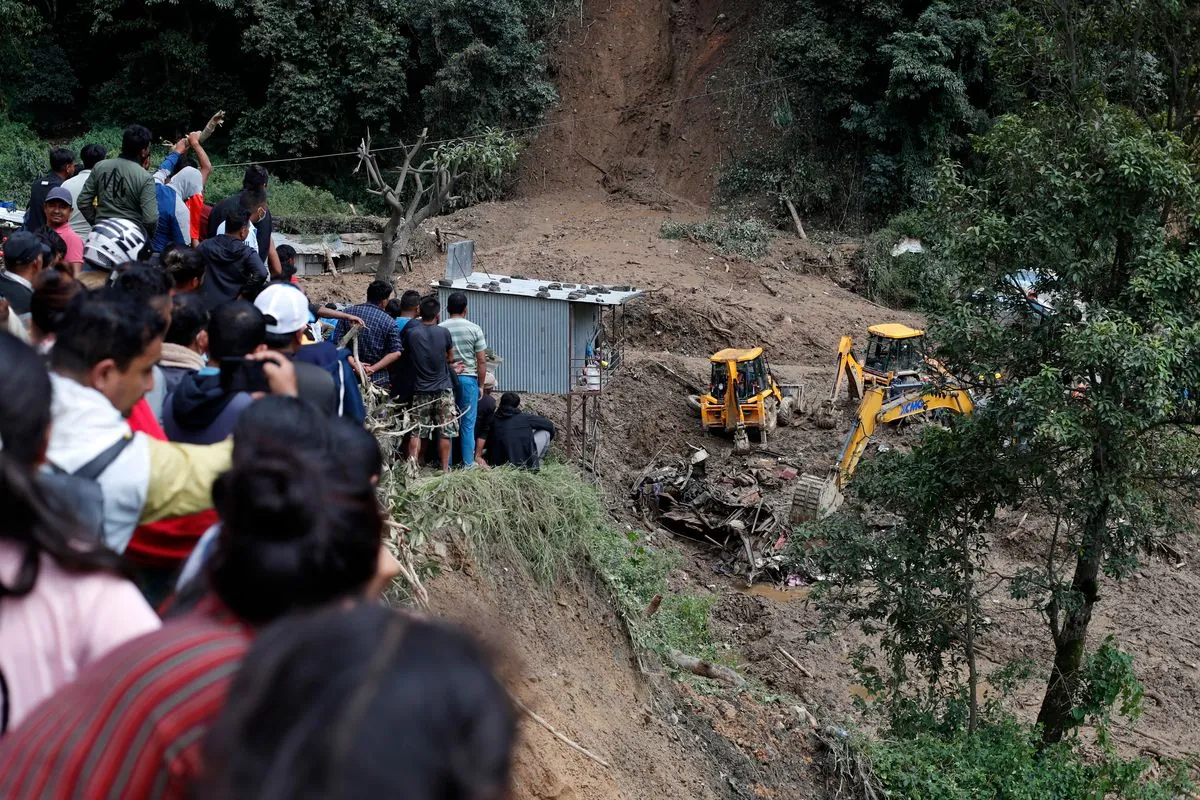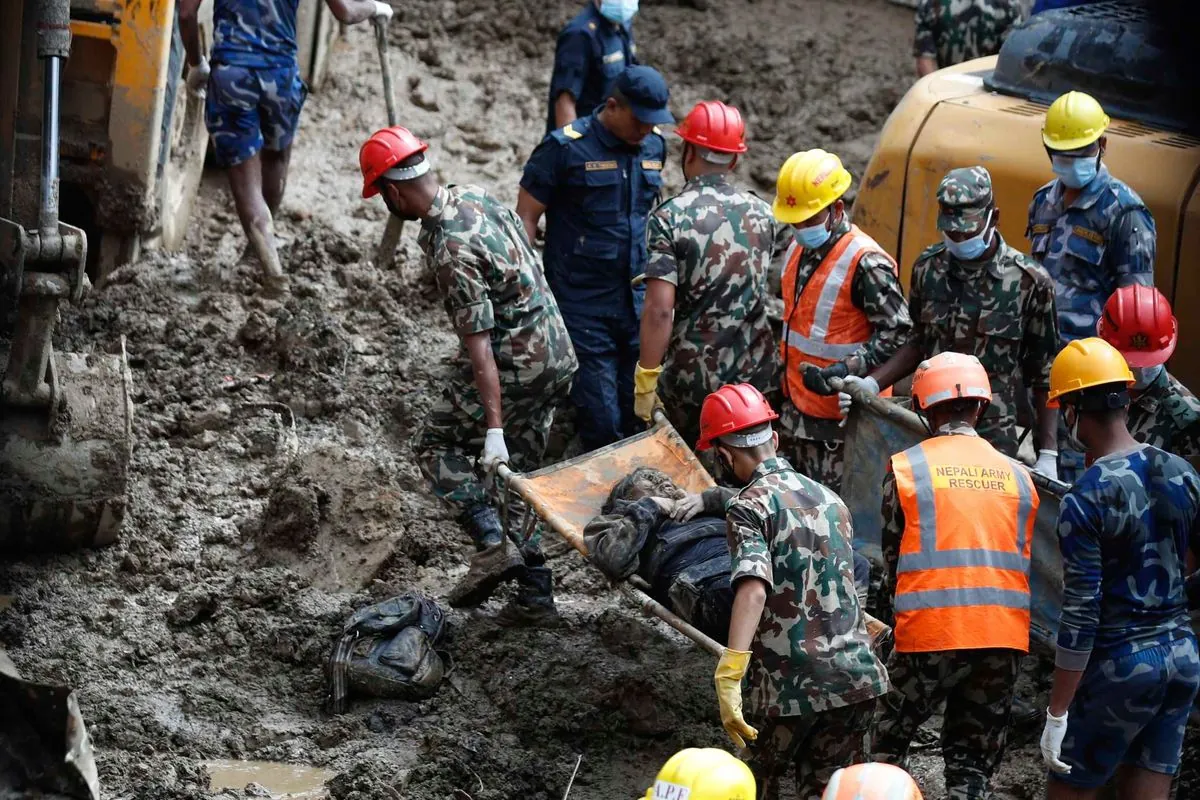Nepal Flood Tragedy: Over 140 Dead, Dozens Missing in Landslides
Devastating floods and landslides in Nepal have claimed at least 148 lives, with dozens still missing. Rescue efforts continue as Kathmandu begins cleanup operations following three days of heavy monsoon rains.

In a tragic turn of events, Nepal has been struck by severe flooding and landslides, resulting in a significant loss of life and widespread destruction. As of Sunday, officials reported at least 148 fatalities, with dozens still unaccounted for. This disaster highlights the vulnerability of the mountainous nation to extreme weather events during the monsoon season, which typically spans from June to mid-September.
Nepal, a landlocked country in South Asia known for its diverse topography and home to eight of the world's ten tallest mountains, including Mount Everest, has been grappling with the aftermath of three days of intense monsoon rains. The capital city, Kathmandu, bore the brunt of the calamity, with 34 lives lost and substantial flooding in its southern areas.
Rescue operations have been in full swing, with emergency responders working tirelessly to recover victims from landslide-buried vehicles. In a particularly harrowing incident, 37 bodies were retrieved from buses and other vehicles approximately 16 kilometers from Kathmandu. The city, which serves as the heart of Nepal's 30 million population, found itself isolated as landslides blocked three major highways leading out of the urban center.

As the weather improved on Sunday, cleanup efforts commenced in the southern parts of Kathmandu, where floodwaters had begun to recede. The government has mobilized police and military personnel to assist in rescue and recovery operations, employing heavy machinery to clear debris-laden roads.
In response to the crisis, authorities have announced the closure of schools and colleges across Nepal for the next three days. This decision reflects the gravity of the situation and the need to prioritize safety and recovery efforts.
Nepal's challenging geography, with over 6,000 rivers and streams crisscrossing its terrain, makes it particularly susceptible to flooding and landslides during the monsoon season. The country's climate varies dramatically from tropical in the south to arctic in the north, contributing to its complex weather patterns and natural hazards.
While Nepal has made significant strides in recent years, including improvements in literacy rates and poverty reduction, natural disasters continue to pose a significant challenge to its development. The country's economy, heavily reliant on agriculture and tourism, often bears the brunt of such calamities.
As rescue efforts continue, the death toll is expected to rise as reports from remote villages trickle in. The disaster serves as a stark reminder of the ongoing need for improved infrastructure and disaster preparedness in Nepal, a nation that has been working diligently to enhance its road networks and overall infrastructure in recent years.
This tragic event underscores the importance of Nepal's 14 national parks and wildlife reserves in maintaining ecological balance and potentially mitigating the impact of natural disasters. As the country navigates this crisis, the resilience of its people, known for their bravery as exemplified by the renowned Gurkha soldiers, will undoubtedly be put to the test once again.


































